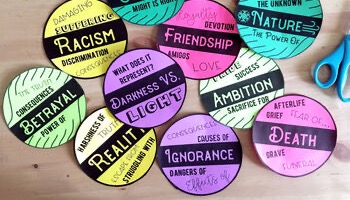My Discipline Strategy That Builds Trust In The Classroom
- Christine

- Jan 16, 2023
- 4 min read
Updated: Jan 18, 2023
OK so the student has misbehaved. Your lesson is complex and what are you going to do? Stop the whole thing to address this kid YET again?
The questions really is:
How will you stop them from acting out again?
Step #1 - Calm down
I take a breath and then I ask myself what is the essential problem? Or at least part of the essential problem? For a student's misbehavior is rarely simple.
A breath in the middle of a lesson usually means I pause or redirect the students to give myself a moment to collect my thoughts. This could be, "discuss with your partner number 3," or "answer the next three questions" or "read the following paragraph yourself."
I think about the ocean when I want to calm down. And yes, a calm state is always a better state to discipline from.
Calm means control.
Calm means that others will listen. Breath.

Step #2 - Make the student wait
You will address their misbehavior on YOUR timeline. Never let their outburst or misbehavior FORCE your hand. They sense it. Some students thrive on the power they feel to provoke a teacher. Never be provoked.

This may mean that they sit out of the activity for a portion of the period. This may mean that they work on something individually while the rest of the class does group work.
"Never be provoked."
Step #3 - Get them on their own, or at least out of earshot
This may mean that you have to wait for the class to be over. Often for me, it simply was me pulling them out into the hallway and having a discussion about their behavior.
This is essential. Students react totally different when they are on their own. The bravado fades. I get eye contact and I get listening. I love it!
"The bravado fades."
Step #4 - Ask them THE essential question
This is it. This is the good stuff.
This is the HEART of this strategy.
I ask them one simple question.
This one question shows them instantly the following:
I am on their side
I want to get along with them and have them in my class
I am interested in what they think and what they have to say
It shows I am a team player and willing to work with them, not against them
THE QUESTION:
What can we do, you and I, to make this work?
Show them that you care about collaboration. The question implies that I am willing to work on the situation too.
A teacher implying they take responsibility for part of the solution. Man, does that feel astronomically different than the discipline I grew up with at school.
By acting as a participant in the project of "making it work" you are now on the same team as the student.
Do they have an answer? They may. Many won't. It doesn't matter.
What matters is that you let them know that your objective is not to shame or control them, but to make this class experience work for the student.
The magic lies in the fact that they THINK you are there to get mad at them. Or to tell them that they are wrong in some way (which they are). Or to show them that you hold all the cards, some dramatic, or many times, not so dramatic, power play.
But you aren't into any of that. You have a different plan. That look of surprise is always one of the best parts.

"That look of surprise is one of the best parts."
Step #5 - Build trust
This question allows them to let themsleves trust me because I have proven myself to be a reasonable and rationale person. The way I do that is I show them that I am listening AND that I am compassionate (by forgoing a discipline action when it is a first offense).
"I have proven myself to be a reasonable and rationale person."
What if it is not a first offense? Then, of course, you would not eliminate the consequence, whatever you desired that to be, but you still ask the question. You still attempt to build trust.
Step #6 - Show leniency if it is the first offense and not a pattern of behavior
Tell them that because they have been apart of this discussion you will not give them the consequence, that they should fairly have. Compassion is appropriate.
For students, who have repeatedly broken rules, implement a fair consequence. You may elaborate why it is a fair consequence and that you still are interested in making this work (the relationship between you and the student, and the student and the class).
You got this. You really do.

Discipline Prevention:
I believe there are two easy ways to prevent issues from arising in the first place.
Tip#1: Minimize down time. Please oh please, have exit tickets and warm ups when possible. Be strict with how you transition from one lesson or part to another. Do not allow students to sit with their work "finished." Always keep your transition times to a minimum.
Tip#2 I also believe that having a dynamic class, with cooperative learning activities, and plenty of opportunity to present, discuss, and create pieces of artwork GREATLY minimizes disciples issues. An engaged student, who is kept busy with a diverse set of tasks they care about, is not a disruptive student.
"An engaged student, who is kept busy with a diverse set of tasks they care about, is not a disruptive student."
Check out the Cooperative Learning Activities HERE.

Struggling to find cooperative learning activities?
Check these resources out HERE!
Find these activities HERE!














Comments